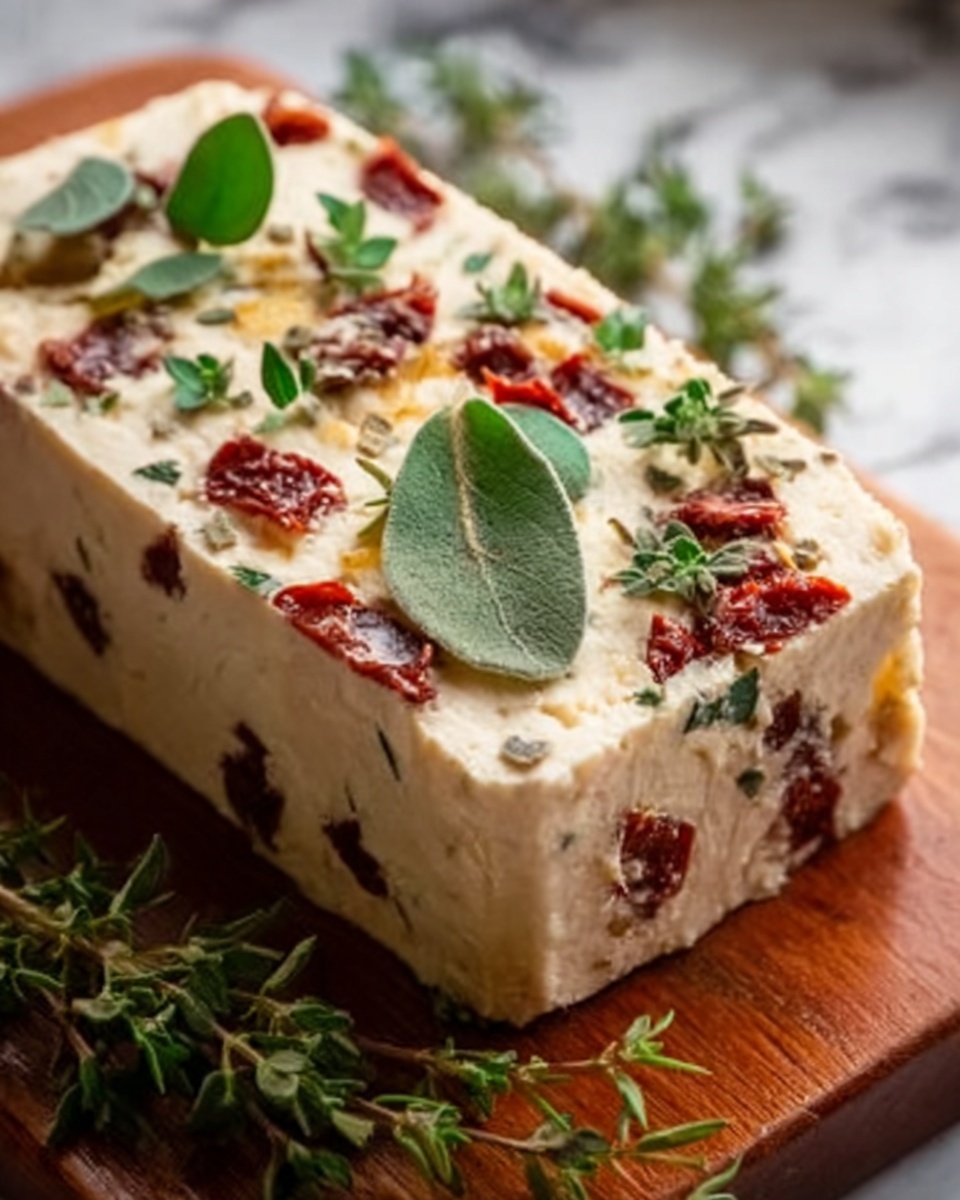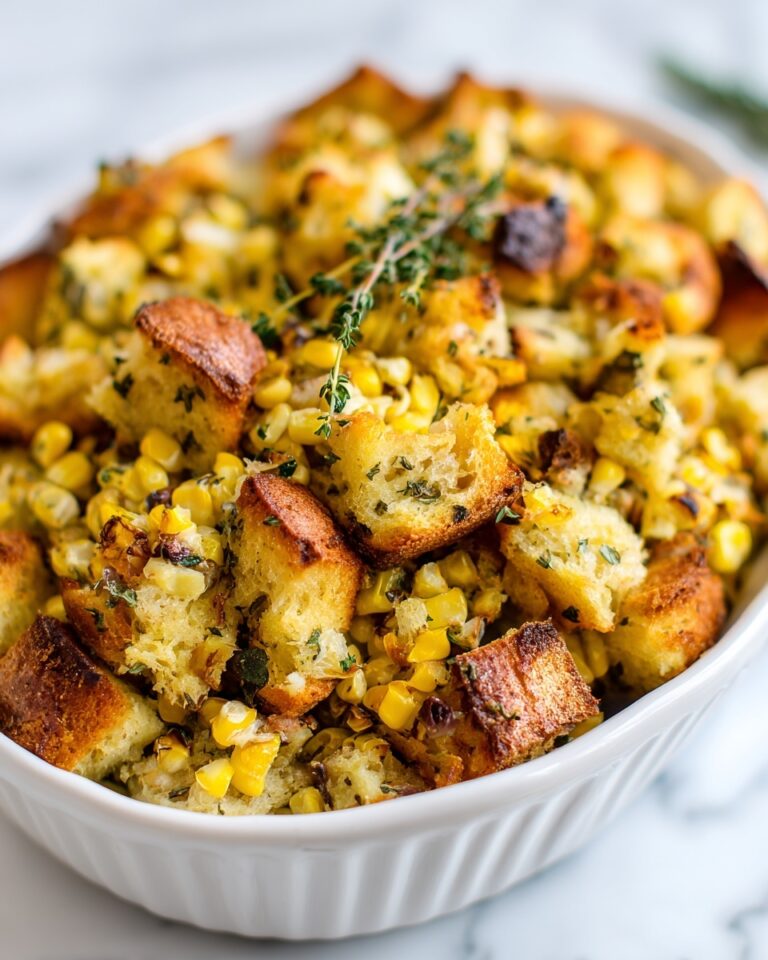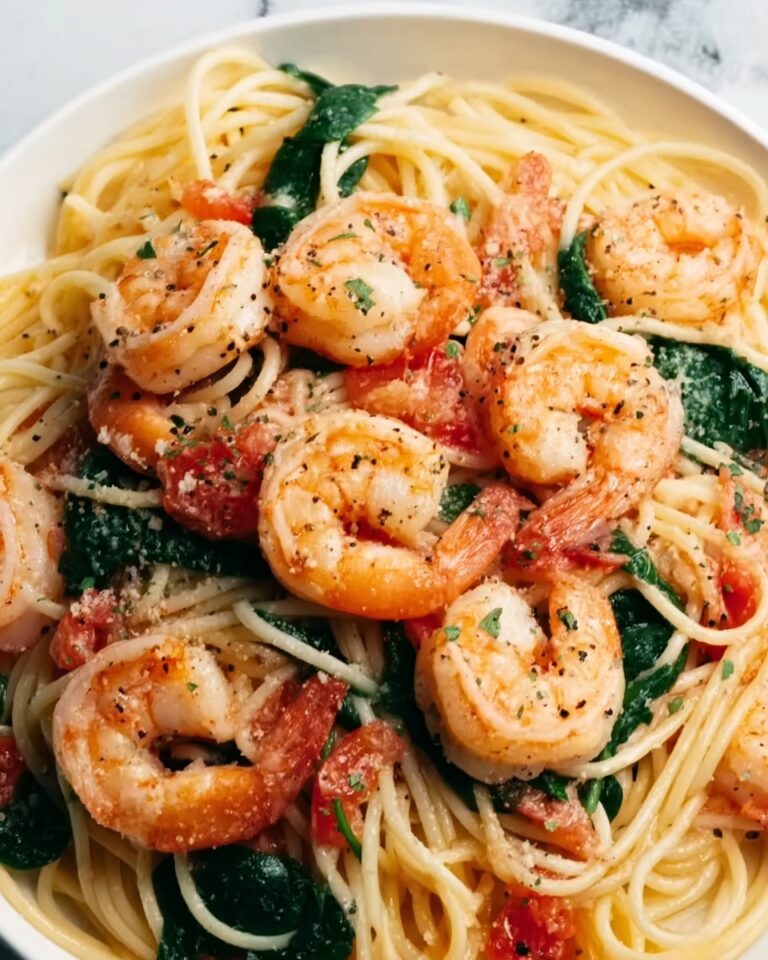If you’re craving a dish that perfectly balances earthy flavors with a touch of elegance, the Potato, Parsnip, Chestnut, and Sage Terrine Recipe is an absolute must-try. This terrine is a celebration of autumn’s bounty, bringing together creamy potatoes, sweet parsnips, and the subtle nuttiness of chestnuts, all enlivened by fresh sage and a tangy dressing. It’s not only visually stunning but also a sublime medley of textures and tastes that feels both rustic and refined—a true showstopper for any meal that deserves something a little special.
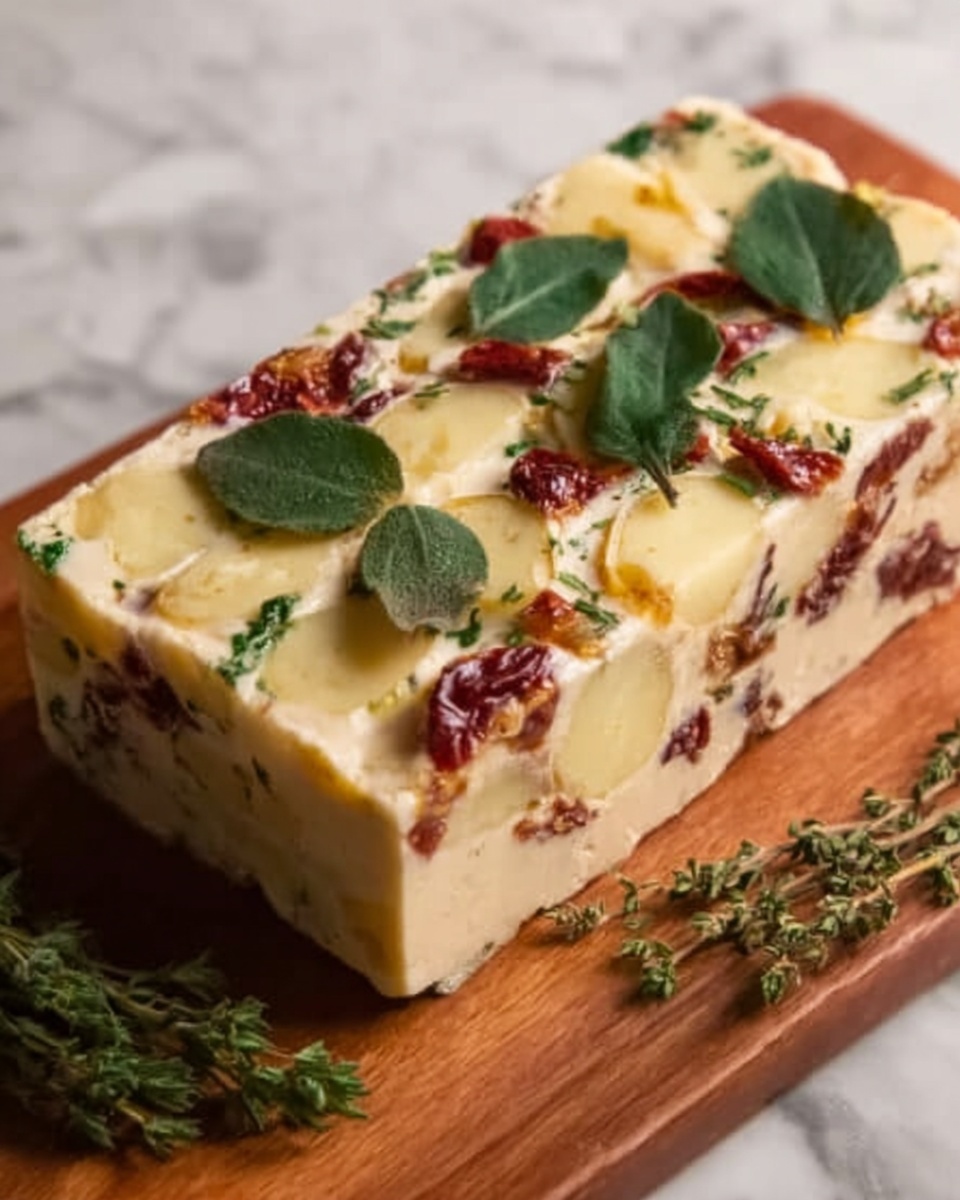
Ingredients You’ll Need
The beauty of this Potato, Parsnip, Chestnut, and Sage Terrine Recipe lies in its simple, natural ingredients that each play a vital role. Every item contributes to the harmony of flavors and textures, creating a dish that’s both comforting and sophisticated.
- 200g parsnips, peeled and diced: Adds natural sweetness and a silky texture that complements the potatoes.
- 500g floury potatoes, peeled and roughly diced: The creamy base that provides a sturdy yet tender foundation for the terrine.
- 180g cooked chestnuts: Brings a nutty richness and a subtle crunch to the mixture.
- 100g cranberry jelly: Offers a vibrant, fruity contrast that highlights the savory notes of the vegetables.
- ½ garlic clove, grated: Adds a gentle pungency without overpowering the other flavors.
- ½ tsp Dijon mustard: A touch of sharpness that lifts the dressing beautifully.
- 50ml rapeseed oil: Keeps the dressing smooth and silky while adding a mild, nutty flavor.
- 10 sage leaves, finely chopped: Infuses the terrine with earthy herbal warmth that perfectly unites the ingredients.
- ½ tsp cider vinegar: Brings a subtle acidity to balance the richness of the chestnuts and potatoes.
- Salt and pepper to taste: Essential seasoning to enhance all the flavors without overshadowing them.
How to Make Potato, Parsnip, Chestnut, and Sage Terrine Recipe
Step 1: Cook the Vegetables
Start by boiling your diced parsnips and potatoes separately in salted water. The potatoes will take about 15 minutes to become tender, while the parsnips cook a bit quicker. This ensures that both vegetables are cooked perfectly, preserving their textures for the terrine.
Step 2: Prepare the Dressing
While the vegetables cook, whisk together grated garlic, Dijon mustard, rapeseed oil, finely chopped sage, and cider vinegar in a small bowl. Season this dressing lightly with salt and pepper. This vibrant mix will coat the vegetables and bring a wonderful depth to the terrine.
Step 3: Coat the Vegetables
Once drained, combine the potatoes, parsnips, and cooked chestnuts in a large bowl. Pour over the sage dressing and toss gently. By coating the ingredients evenly, you ensure every bite bursts with herbal and acidic notes that tantalize the palate.
Step 4: Prepare the Terrine Mould
Line a loaf tin or terrine mould with cling film, leaving enough overhang to fold it back over the top later. Spread the cranberry jelly evenly across the bottom—a beautiful, sweet base that will add stunning color and a punch of flavor once you slice the terrine.
Step 5: Pack the Terrine
Spoon the potato, parsnip, and chestnut mixture carefully into the tin. Press gently to compact the mixture, removing air gaps but keeping the texture intact—this is what gives your terrine its firm yet tender character.
Step 6: Weigh It Down and Chill
Fold the cling film over to cover the mixture completely. To help it set nicely, place a heavy object or another loaf tin on top and refrigerate overnight. This step is key for achieving the perfect sliceable texture.
Step 7: Serve
Once set, the terrine slices best when chilled but serves wonderfully at room temperature as well. For a delightful warm twist, try slicing and grilling the terrine before serving—it adds a lovely golden crust that contrasts with the soft interior beautifully.
How to Serve Potato, Parsnip, Chestnut, and Sage Terrine Recipe
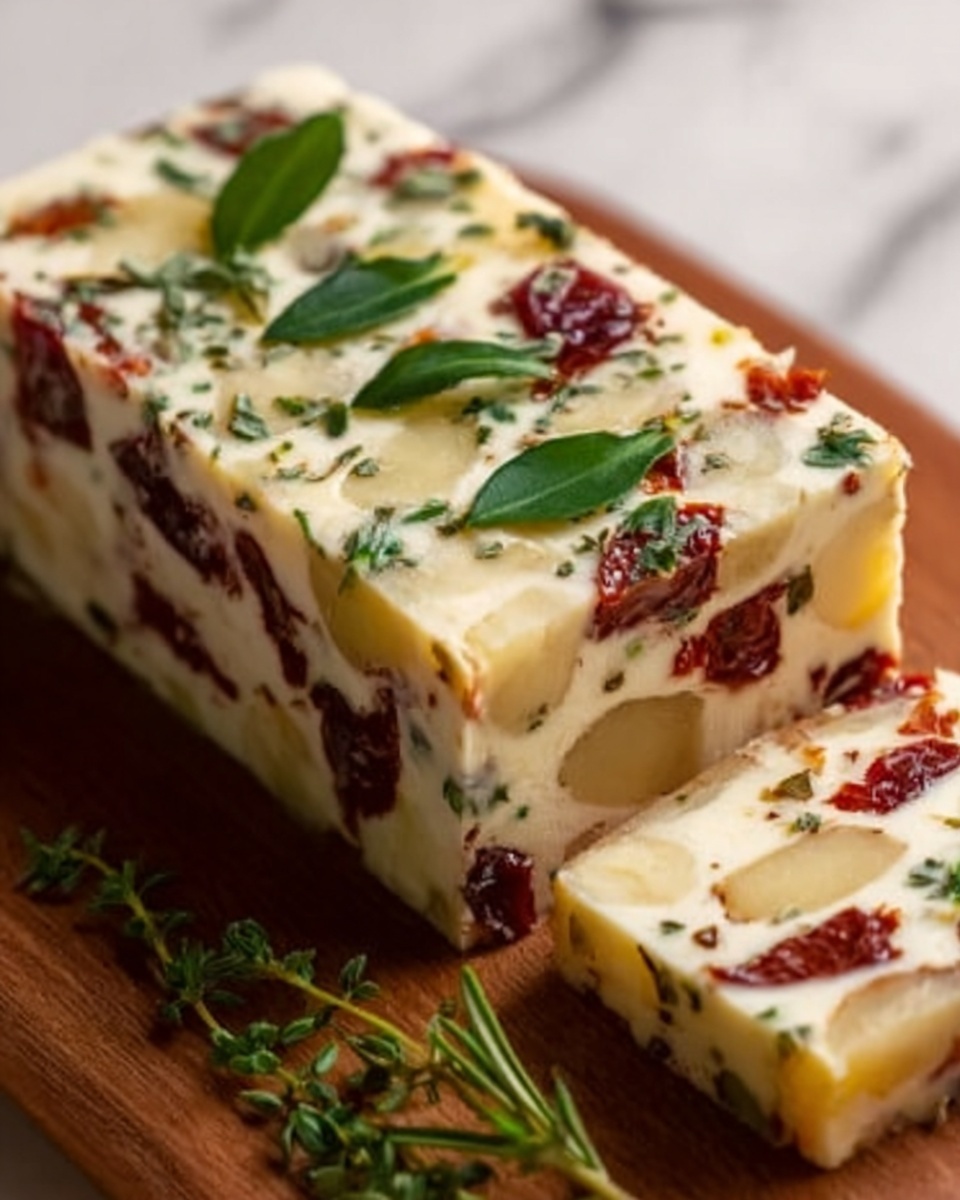
Garnishes
A sprinkle of fresh sage leaves or a few sprigs of thyme make simple yet elegant garnishes. You could also add a dollop of extra cranberry jelly or a drizzle of good-quality rapeseed oil to enhance the flavors and presentation.
Side Dishes
This terrine pairs wonderfully with crisp, lightly dressed autumn greens or a salad with a sharp vinaigrette. Roasted root vegetables or a warm lentil salad add heartiness to the meal, making it ideal for a comforting lunch or dinner.
Creative Ways to Present
For a stunning appetizer, cut the terrine into neat slices and serve on toasted sourdough or crackers with a smear of cranberry jelly. Alternatively, layer thinner slices in a vertical terrine mold for a dramatic presentation that will wow your guests.
Make Ahead and Storage
Storing Leftovers
Keep any leftover terrine wrapped tightly in cling film or in an airtight container in the fridge. It will maintain its best texture and flavor for up to three days, making it a great option for make-ahead meals or elegant snacks.
Freezing
While freezing is possible, it can affect the delicate texture of the terrine. If you do freeze it, wrap it securely in plastic and foil to prevent freezer burn and consume within one month. Thaw slowly in the fridge before serving.
Reheating
This dish is ideally served cold or at room temperature, but if you prefer warm terrine, slice and gently grill or pan-fry it. This quick heat activates the flavors without drying the terrine out.
FAQs
Can I use fresh chestnuts instead of cooked ones?
Fresh chestnuts need to be cooked and peeled before using in this recipe. Cooked chestnuts save time and are perfect for ensuring the right texture in your terrine.
Is there a vegetarian or vegan alternative for the rapeseed oil?
Rapeseed oil is already plant-based, but you could substitute with olive oil for a slightly different flavor profile if you prefer.
How firm should the terrine be after chilling?
The terrine should be firm enough to slice neatly without crumbling, but still tender inside. The overnight chilling with weight ensures this perfect consistency.
Can I prepare this terrine in advance for a dinner party?
Absolutely! This terrine benefits from sitting overnight, so it’s ideal for preparing ahead and making entertaining easier and more impressive.
What is the best way to reheat the terrine if I want it warm?
Slice the terrine and grill or pan-fry the pieces gently. This warms it through and adds a crispy exterior without losing the moist, tender interior.
Final Thoughts
There’s something truly special about this Potato, Parsnip, Chestnut, and Sage Terrine Recipe that makes it a treasure to add to your culinary repertoire. It’s a dish that invites savoring and sharing, perfect for those moments when you want to impress without fuss. Give it a try—it might just become one of your favorite ways to celebrate the simple luxuries of seasonal ingredients.
Print
Potato, Parsnip, Chestnut, and Sage Terrine Recipe
- Prep Time: 15 minutes
- Cook Time: 20 minutes
- Total Time: 1 hour (plus overnight chilling)
- Yield: 8 servings
- Category: Starter
- Method: Boiling and No-Cook (assembling and chilling)
- Cuisine: European
- Diet: Vegetarian
Description
This Potato, Parsnip, Chestnut, and Sage Terrine is a beautifully layered, vegetarian dish combining soft boiled parsnips and potatoes with the sweet nuttiness of chestnuts and a fragrant sage dressing. Set in a terrine mould with a base of cranberry jelly, it offers a delicate balance of savory and slightly sweet flavors, perfect as an elegant starter or a unique side. Served cold or at room temperature, it can also be grilled for a warm variation, delivering a versatile and visually impressive dish.
Ingredients
Vegetables and Nuts
- 200g parsnips, peeled and diced
- 500g floury potatoes, peeled and roughly diced
- 180g cooked chestnuts
Dressing
- ½ garlic clove, grated
- ½ tsp Dijon mustard
- 50ml rapeseed oil
- 10 sage leaves, finely chopped
- ½ tsp cider vinegar
- Salt and pepper to taste
Other
- 100g cranberry jelly
Instructions
- Cook the vegetables: In separate pans, boil the diced parsnips and potatoes in salted water until tender. The potatoes typically take about 15 minutes, while parsnips need slightly less time. Ensure both are soft but not falling apart.
- Prepare the dressing: In a small bowl, whisk together the grated garlic, Dijon mustard, rapeseed oil, finely chopped sage, and cider vinegar. Season the mixture with salt and pepper to your preference, creating a fragrant and balanced dressing.
- Coat the vegetables: Drain the parsnips and potatoes thoroughly, then combine them with the cooked chestnuts in a large bowl. Pour over the sage dressing and gently toss the ingredients to evenly coat all the vegetables without mashing them.
- Prepare the terrine mould: Line a loaf tin or terrine mould with cling film, ensuring ample overhang to allow covering later. Spread a layer of cranberry jelly evenly across the bottom to add sweetness and help set the terrine.
- Pack the terrine: Spoon the coated vegetable and chestnut mixture into the lined tin. Press down gently to eliminate air pockets but keep the texture intact, creating a compact terrine.
- Weigh it down and chill: Fold the cling film over the top to seal. Place a second loaf tin or a heavy object on top of the terrine to compress it further. Refrigerate overnight to allow flavors to meld and the terrine to set firmly.
- Serve: Once set, slice the terrine carefully. It serves best cold or at room temperature as a starter or alongside a main dish. For a warm alternative, grill slices briefly to add a subtle crispness and enhanced flavor.
Notes
- Using floury potatoes is essential for the right texture to hold the terrine.
- Make sure to weigh down the terrine well during chilling for a firm, sliceable finish.
- Prepared chestnuts can be used to save time, but roasting fresh chestnuts adds extra depth.
- The terrine can be made a day ahead, making it a great dish for entertaining.
- Grilling the terrine slices warms the dish and adds a deliciously crisp exterior.

